There is a lot to tell when it comes to the ongoing dig at the agora at Izmir. There have been whole sessions on some of the findings, especially in regard to the graffiti, and there is no doubt at all that there is Christian graffiti at the lower level of the basilica in this agora. What is debated is the date of this graffiti with the head Turkish archaeologist saying its probably third century, but Roger Bagnall, at least originally thought it could be considerably earlier. In any case, it is important. Let’s look at the site itself first.
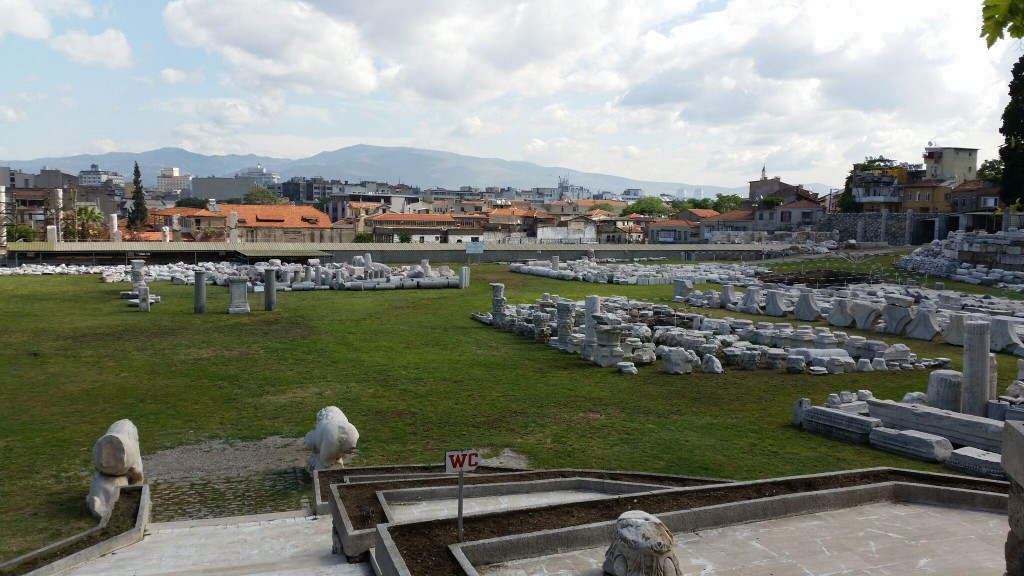
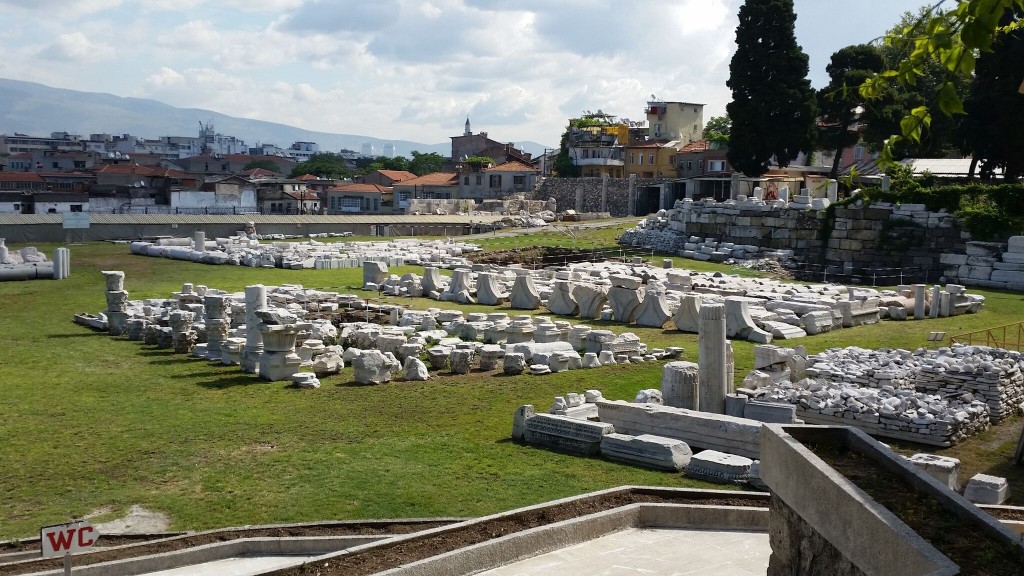
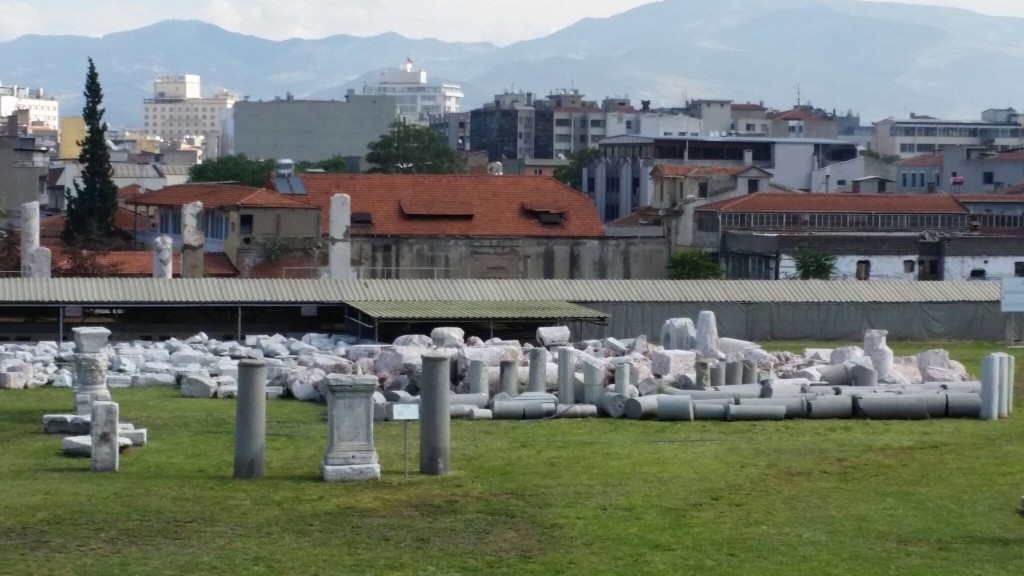 This is a very large agora indeed, serving a large city, which Alexander the Great had a hand in moving from it’s previous site at Beyrakli down the road a piece, to its current site due to a dream he had….
This is a very large agora indeed, serving a large city, which Alexander the Great had a hand in moving from it’s previous site at Beyrakli down the road a piece, to its current site due to a dream he had…. 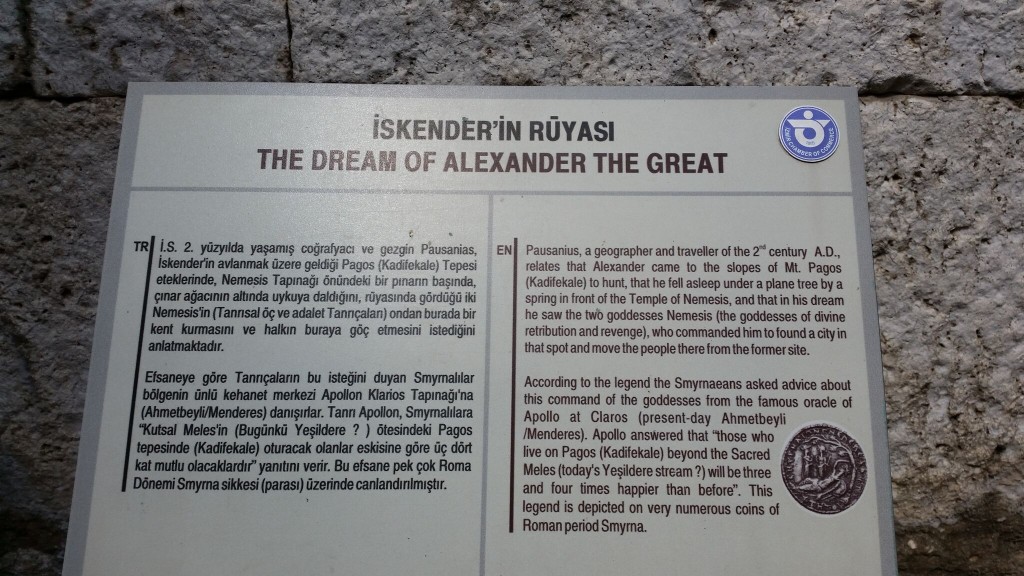 Smyrna even beat out Pergamon and Ephesus for special honors, as some of the inscriptions make clear…..
Smyrna even beat out Pergamon and Ephesus for special honors, as some of the inscriptions make clear…..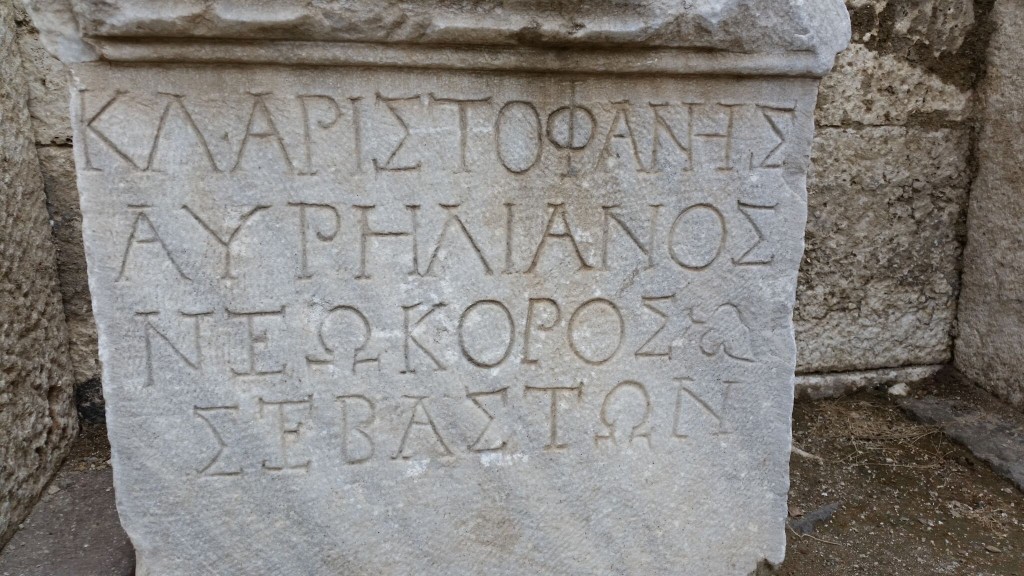
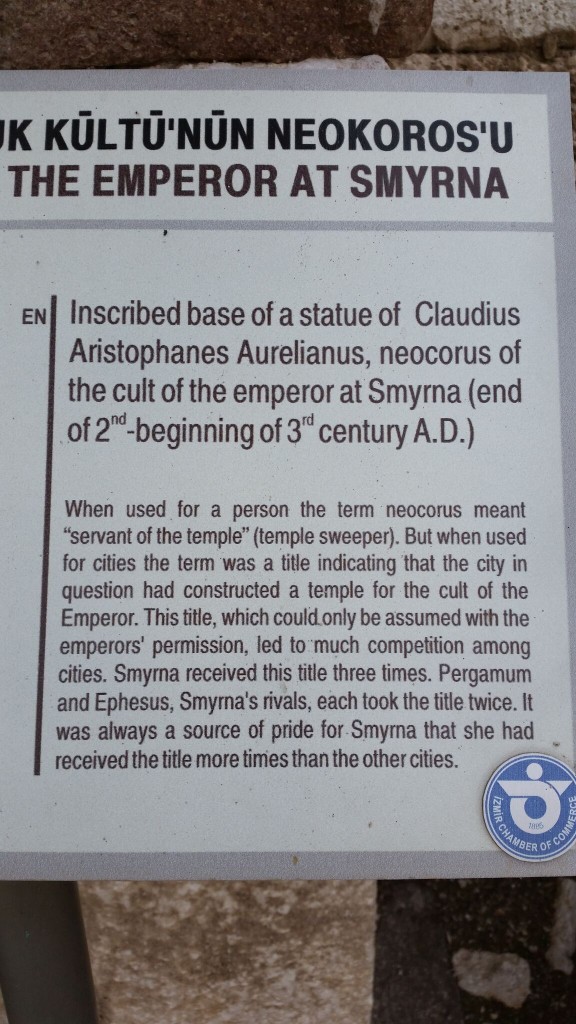
Important people wanted to be associated with this city, and the propaganda of inscriptions began as soon as one landed at the port and walked through the nearby agora. 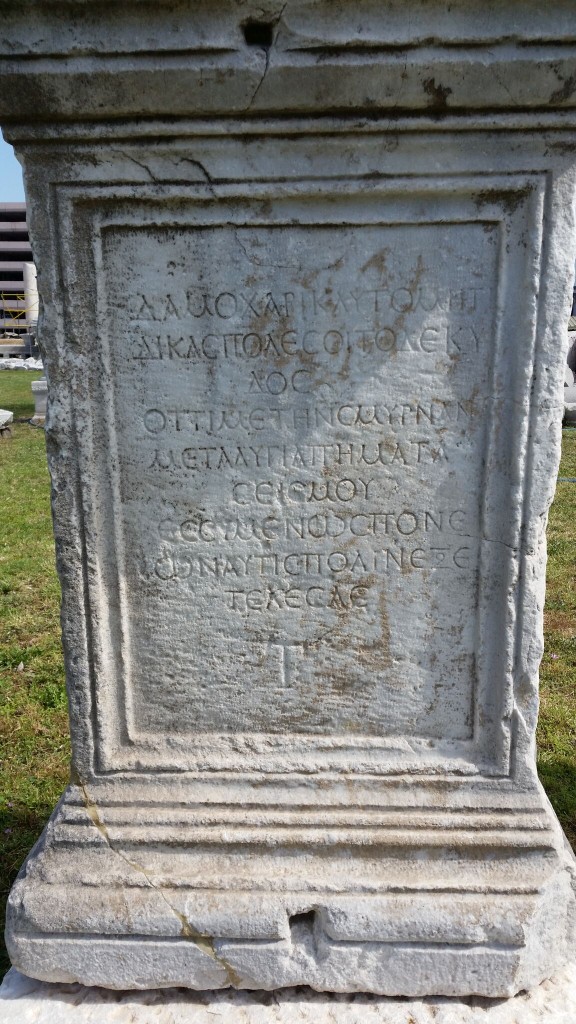
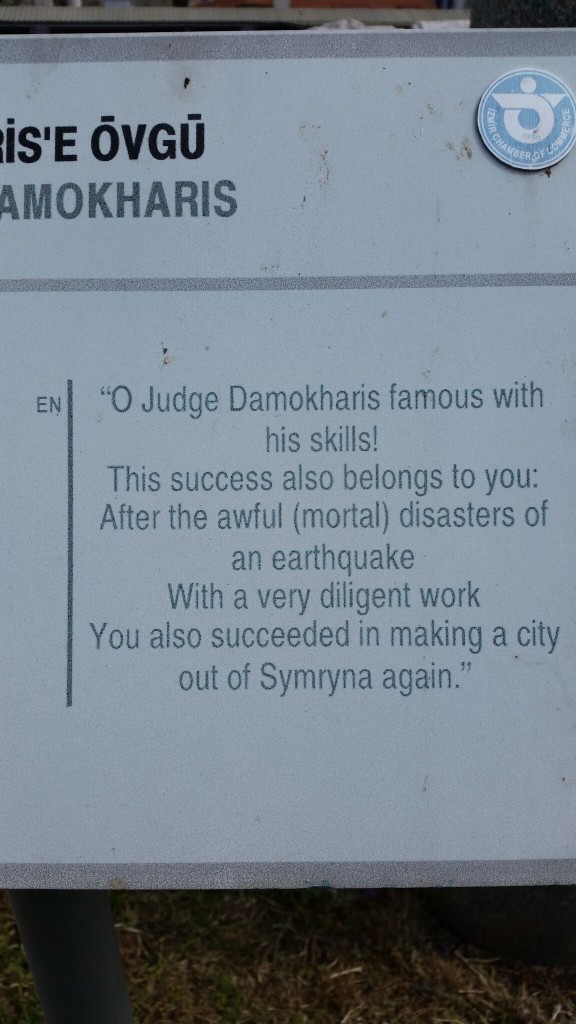
The agora basilica had several levels, 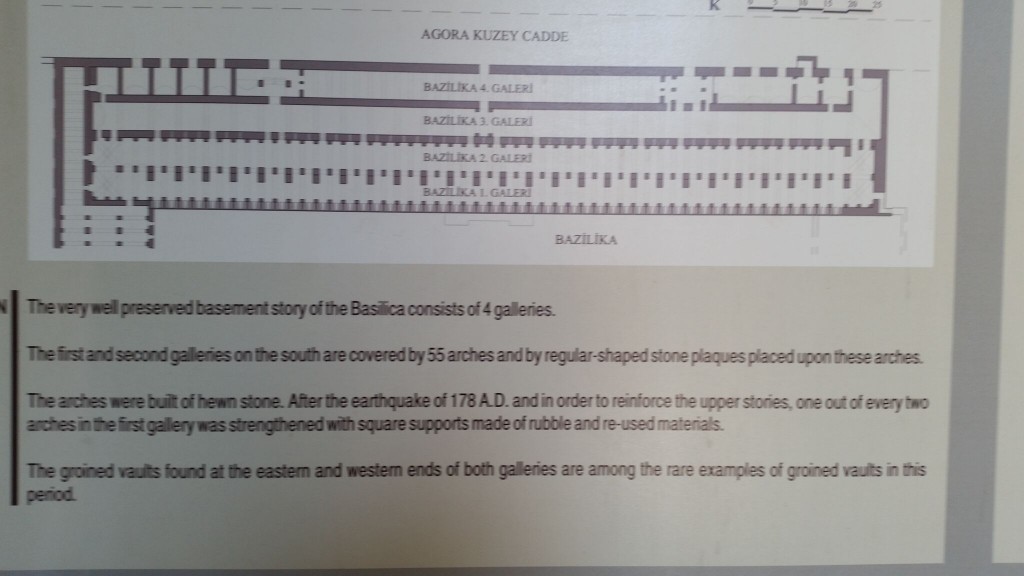 We are just interested in the reconstruction of the lower level….
We are just interested in the reconstruction of the lower level….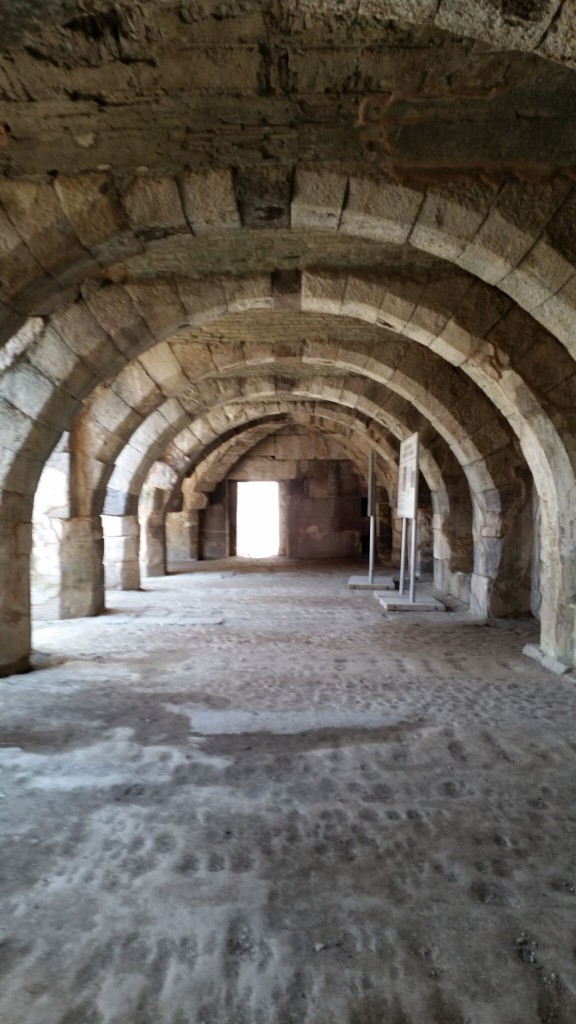
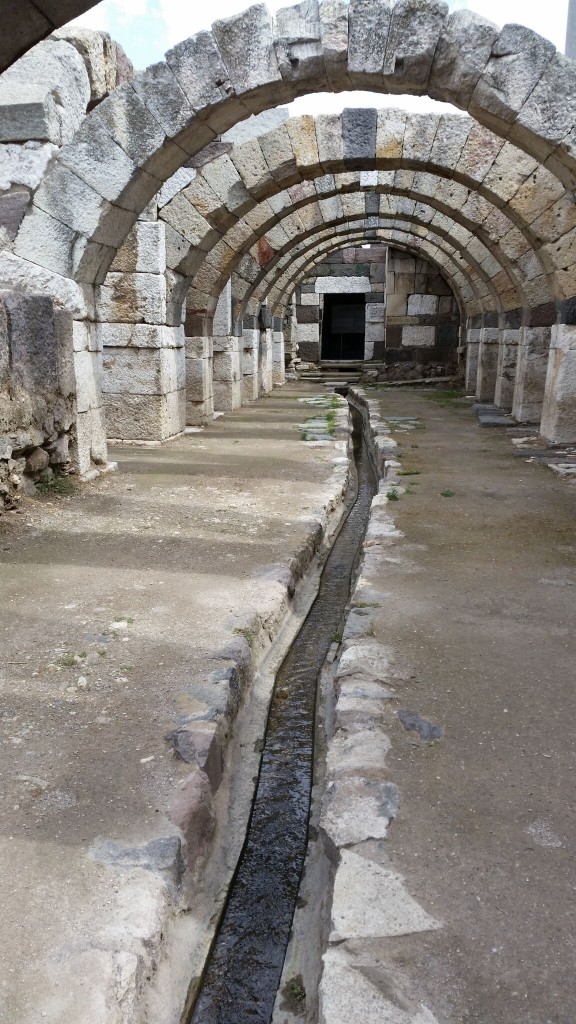
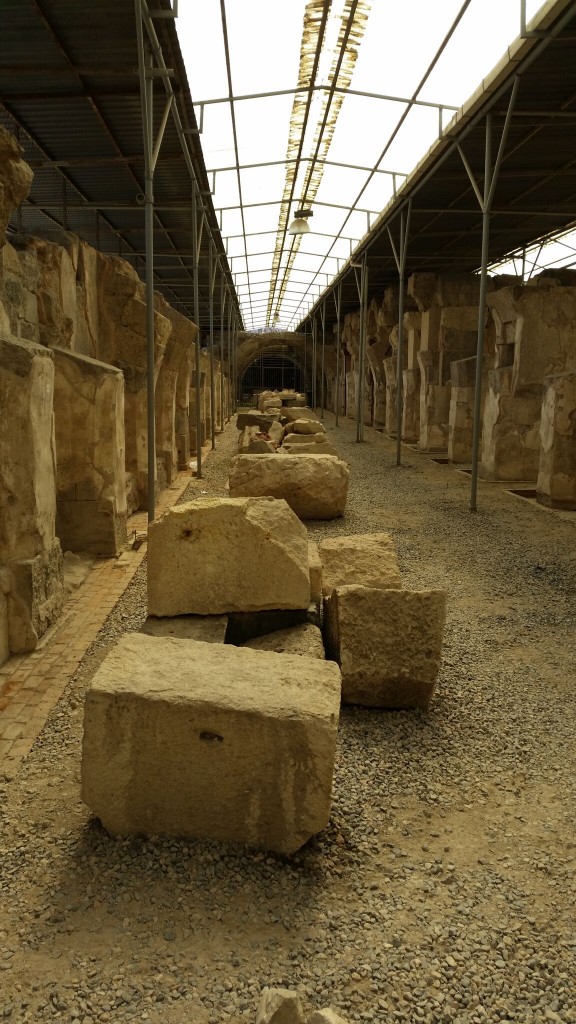 These basilicas were held up by massive columns….
These basilicas were held up by massive columns….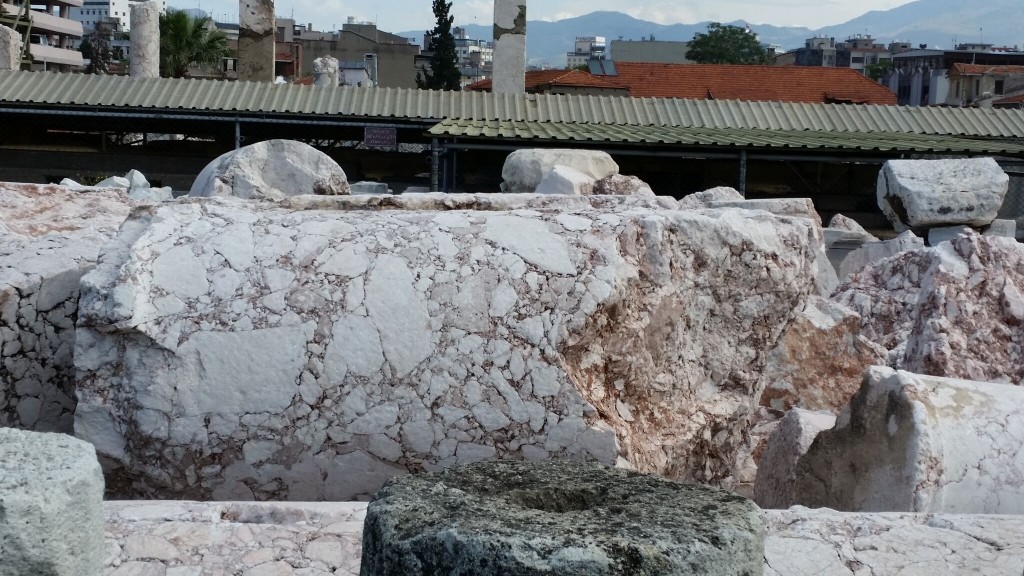 Here there were all sorts of shops and booths for buying food and all other kinds of things. There was a fresh water fountain as well….
Here there were all sorts of shops and booths for buying food and all other kinds of things. There was a fresh water fountain as well….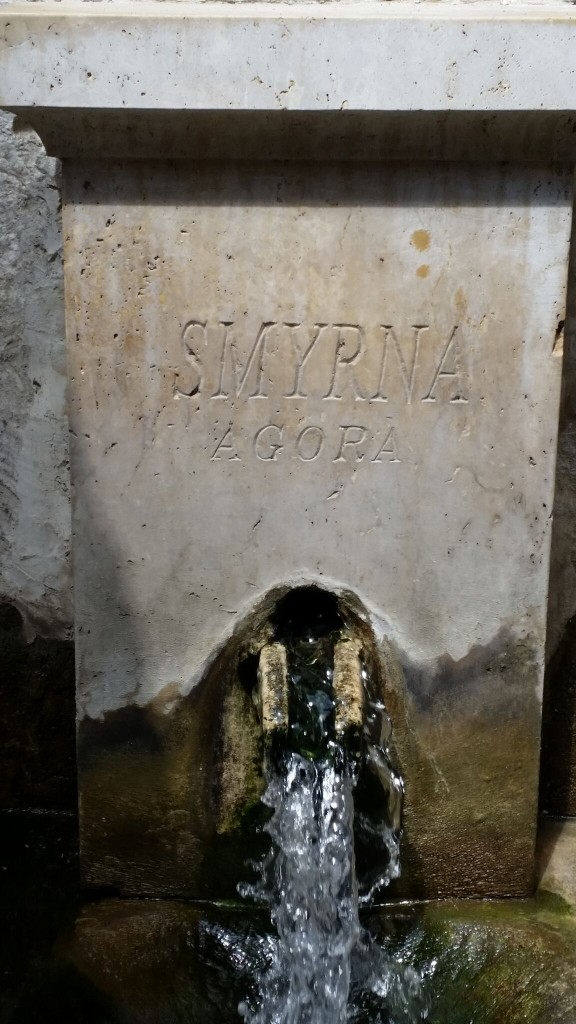 There were flowers growing, and lots of hustle and bustle from the crowds coming into the city and the natives shopping. It was a natural meeting place for natives to meet newcomers to town.
There were flowers growing, and lots of hustle and bustle from the crowds coming into the city and the natives shopping. It was a natural meeting place for natives to meet newcomers to town. 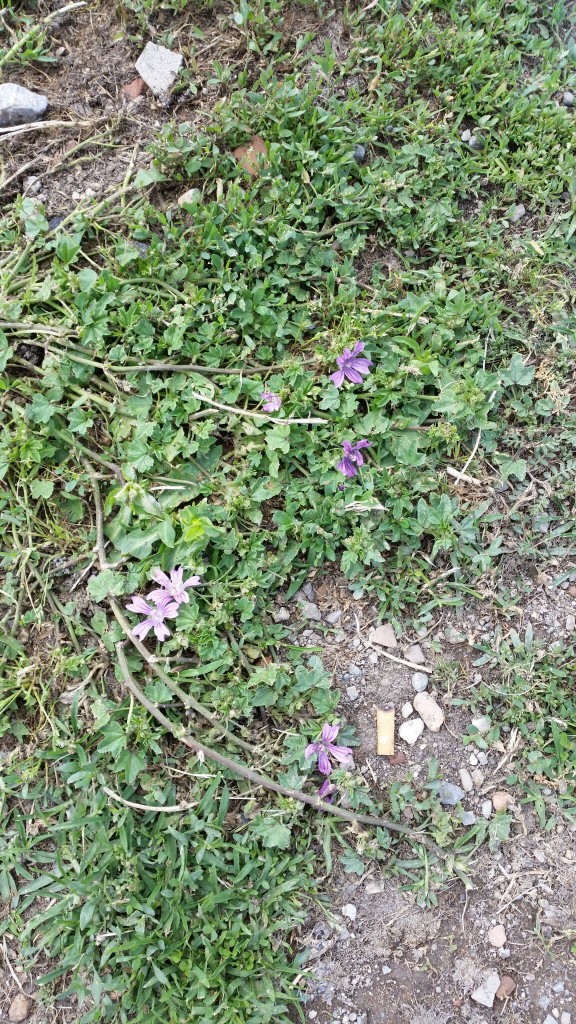
This brings us to the graffiti, which one is not allowed to photograph on the site any more, without special permission. These shots come to me courtesy of the head archaeologist by way of Levent Oral. There was a paper given at the SBL 3 years ago by these archaeologists and various examples were cited of partial Scripture quotes, and references to nomina sacra, the sacred names used by Christians for their God. That is why this particular graffito is of interest, and has not been previously discussed. Most of the graffiti involves drawings of ships, scatalogical images and references, silly pictures along the line of doodling…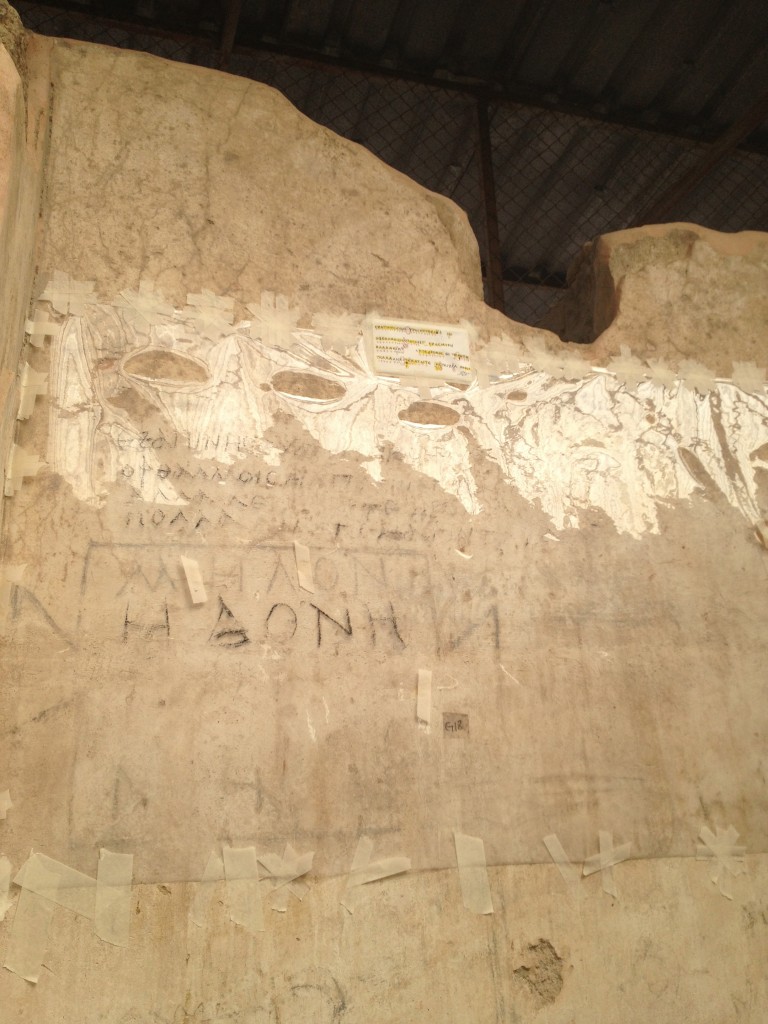
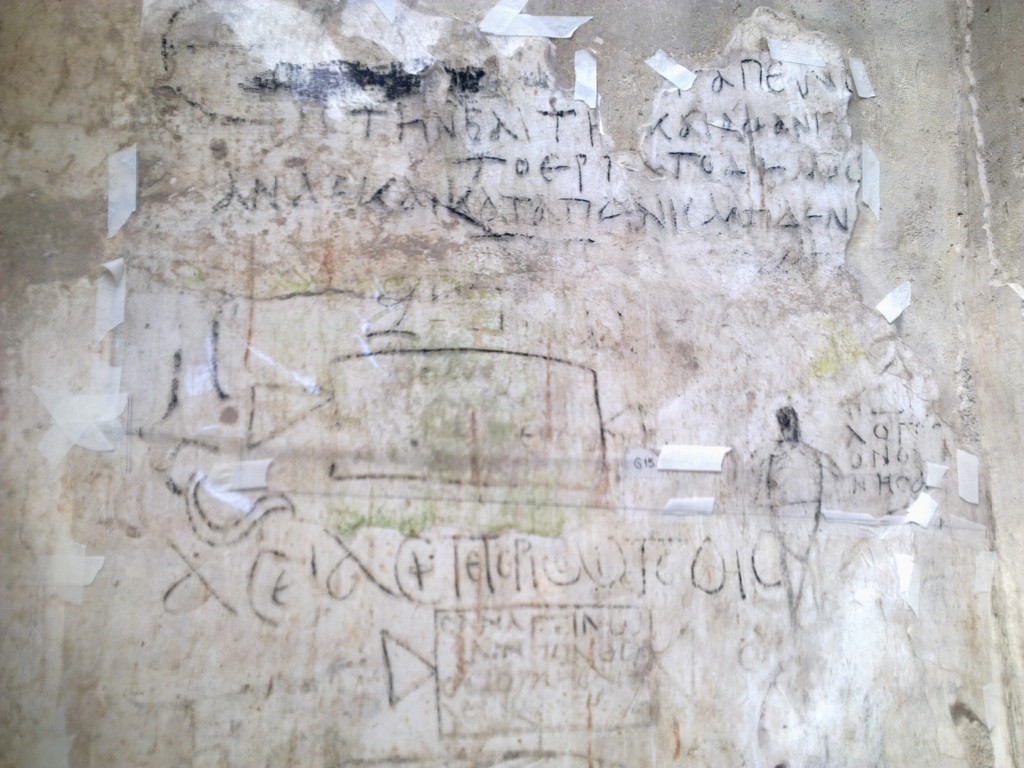 and word squares. The latter is what I’m interested in…. in this one in particular….
and word squares. The latter is what I’m interested in…. in this one in particular….
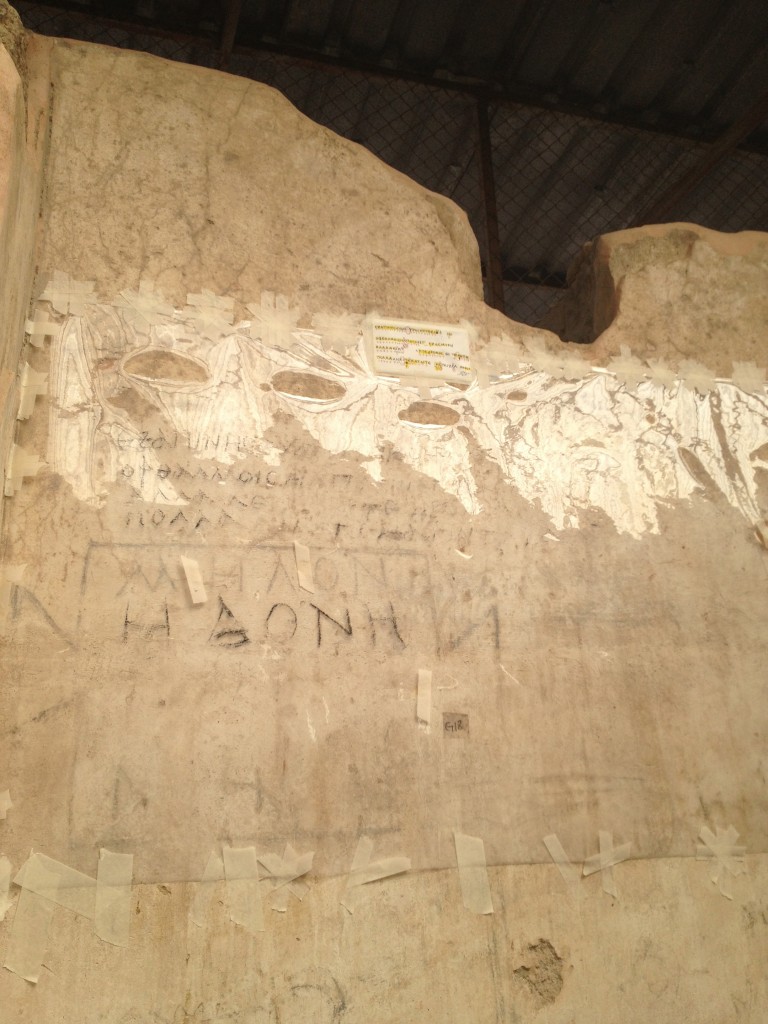
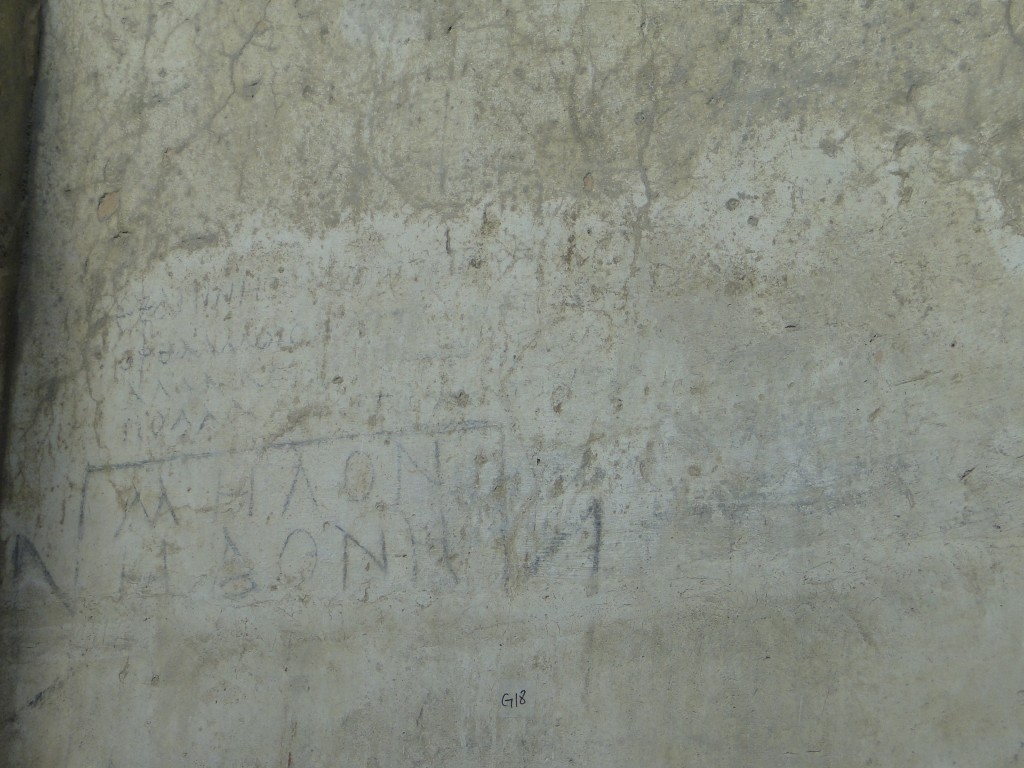 I freely admit that this is somewhat difficult to decipher….. but I stood and stared at this graffito for a long while, and it seems clear that in the middle of the word square from top to bottom we have the word LOGOS, and on the second line of the word square going from left to right we have the word ADONE. Now the latter could be the transliterated form in Greek of the Hebrew ‘adonai’, while the former is of course used of Jesus in John 1 already, and also in 1 John and in Revelation.
I freely admit that this is somewhat difficult to decipher….. but I stood and stared at this graffito for a long while, and it seems clear that in the middle of the word square from top to bottom we have the word LOGOS, and on the second line of the word square going from left to right we have the word ADONE. Now the latter could be the transliterated form in Greek of the Hebrew ‘adonai’, while the former is of course used of Jesus in John 1 already, and also in 1 John and in Revelation.
How did these graffiti get here? It could be from shop owners who would be standing for a long time in their booths, perhaps a Christian baker or shop owner providing a clue to arriving Christians how they could make contact with their brothers and sisters….We cannot be sure, but in light of Bruce Longenecker’s recent book reviewed on this blog, this is possible, for we have evidence from Pompeii not only to a clear reference to ‘Christianoi’ in a graffito, but also we have the symbol of the cross in a bakery (see the previous posts on his book).











